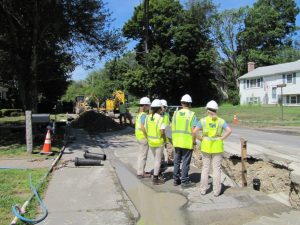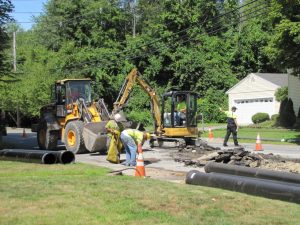National Work Zone Awareness Week: Don’t Be THAT Driver!

It’s National Work Zone Awareness Week (NWZAW) and this year’s theme is “Don’t Be THAT Driver!” Begun in 1999 by the Federal Highway Administration (FHWA), the American Traffic Safety Services Association (ATSSA), and the American Association of State Highway and Transportation Officials (AASHTO) to increase public awareness of work zone safety issues, NWZAW has since become a national event, with State agencies and other pertinent organizations sponsoring and participating in educational and outreach initiatives. NWZAW is always held in April, the beginning of construction season for many organizations, and serves as an excellent time to remind drivers to be mindful of work zones and the many people who work in them.
This Year’s Theme: Don’t Be THAT Driver!

Work zone fatalities in the United States steadily decreased from 2005-2010 due to increased awareness and safety measures. However, since 2010, the number of work zone fatalities has been slowly increasing (Figure 1). Why? Distracted driving. Smart phones have brought distracted driving accidents and fatalities to an unprecedented level, and work zones are no exception. This year’s theme of “Don’t Be THAT Driver!” reinforces the message that motorists need to constantly be alert and prepared for driving anomalies, such as work zones. Distracted drivers often do not notice changes such as brake lights or work zones in time to prevent serious accidents. Drivers who are distracted, which includes any activity other than driving, such as eating, reading, shaving, applying makeup, or using a mobile device, are up to four times more likely to be involved in a crash.
 While cell phone usage is admittedly the biggest culprit, distracted driving includes ANY activity that diverts a driver’s attention. The three main types of distraction are as follows:
While cell phone usage is admittedly the biggest culprit, distracted driving includes ANY activity that diverts a driver’s attention. The three main types of distraction are as follows:
- Visual – taking your eyes off the road. This includes cell phone usage, reading, or looking at something off the road or your passenger.
- Manual – taking your hands off the wheel. This includes using a cell phone, changing the radio station, digging in the glovebox, or eating your breakfast.
- Cognitive – taking your mind off what you are doing. This includes talking on your cell phone and arguing with your spouse.
Note that cell phone usage contributes to all three types of distraction. Other factors affecting work zone accidents include aggressive driving and, of course, speed. In 2014, distracted driving was responsible for 16% of fatal crashes in work zones, while speeding was a factor in 29%. The most common type of work zone crash is a rear-end collision.
Work Zone Employees — Somebody’s Loved Ones

NWZAW is of particular import to Tata & Howard, as work zones include all types of roadway construction, including water and sewer line installation, repair, and replacement – which we do a lot of! Therefore, our engineers and resident observers are frequently present in work zones, along with construction crews and police officers. All of these people have families, parents, children, and friends. During NWZAW, we at Tata & Howard implore you to think about how fast and how safely you would want someone to drive by a work zone if your loved ones worked there. Work zones can be confusing and challenging due to traffic interruptions, workers blending in with cones and signs, and narrowed roadways. Slow down, be alert, and most importantly, pay attention! Our goal, along with NWZAW, is to see that 100% of work zone workers are safe.
Be Smart, Be Safe

Over 40,000 people are injured each year as a result of motor vehicle crashes in work zones, and every ten hours, someone in the United States is killed in a work zone. Fatal crashes occur most frequently during the summer and fall months, when construction is at its peak. Construction season is upon us, and during NWZAW, we are asking each and every one of you to think about the workers on our roadways, to drive with caution and care, and to spread the word about work zone safety. Together, we can work toward a goal of zero work zone deaths, and ensure that our engineers, supervisors, construction crews, and police officers all make it home safely for dinner.
